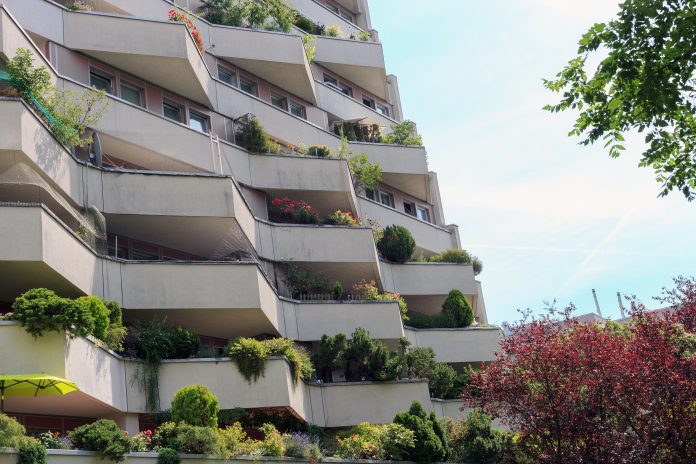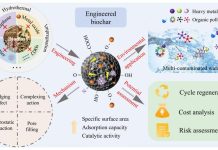In this climate change and biodiversity loss focus, Harriet Bulkeley, Professor at Durham University in the UK and Kes McCormick, Associate Professor at Lund University in Sweden, argue that nature-based solutions in the city are not just for the birds
There is increasing recognition amongst policymakers and the public alike that the challenges of climate change and the loss of nature and biodiversity are interwoven and must be tackled together. While global greenhouse gas emissions continue to rise, the impacts of climate change are not just to be felt on our infrastructure and in our communities, but also within our natural systems. A recent Global Assessment concludes that climate change is one of the major drivers of the loss of nature globally. At the same time, there is growing interest in the role that nature might play in helping society address climate change and at the same time, meet our Sustainable Development Goals.
In this light, nature-based solutions – that work by using the properties of natural systems to create benefits for nature and society – are attracting growing attention. In this article, we explore the benefits of bringing nature-based solutions into the city for people and nature, before considering some of the key challenges that need to be overcome if we are to unlock the potential of urban nature-based solutions for addressing both local and global sustainability goals.
The definition of nature-based solutions
“Nature-based solutions are solutions that are inspired and supported by nature, which are cost-effective, simultaneously provide environmental, social and economic benefits and help build resilience. Such solutions bring more, and more diverse, nature and natural features and processes into cities, landscapes and seascapes, through locally adapted, resource-efficient and systemic interventions.” (European Commission)
New opportunities for urban sustainability?
Working with nature is increasingly being seen as a means through which cities can tackle climate change. By removing carbon from the atmosphere and storing it, natural ecosystems like forests, soil and seagrasses can contribute to global goals for mitigating climate change. In urban environments, while these forms of carbon removal matter, nature-based solutions are most effective in helping to mitigate climate change when they are used to reduce demand for energy. With the effects of urban heat islands increasing, nature-based solutions are set to become more important as a means through which we can reduce our use of energy by providing passive cooling for individual buildings and at the street or neighbourhood scale. Nature-based solutions can be an effective way of delivering both climate mitigation and adaptation benefits by providing natural cooling in the city.
At the same time, other kinds of nature-based solutions that provide new ways of managing water in cities can reduce flood risk and help cities to become more resilient to the effects of climate change. Nature-based solutions are also being used by cities to directly tackle the challenge of the loss of biodiversity. Our analysis shows that cities are working with nature to both conserve biodiversity and to restore degraded ecosystems, such as wetlands and waterways. By focusing directly on how nature can contribute to society, nature-based solutions also enable us to thrive with nature – addressing health and well-being issues plus contributing to economic regeneration and high quality of life.
Conserve, restore and thrive
Conserve
Urban nature in cities and their surrounding landscapes are home to important wildlife. Protecting urban nature can create havens for plants and animals and ensure that endangered and rare species are conserved. Protecting urban nature can also offer cities resilience to the changing climate and improve air and water quality for citizens.
Restore
Urban nature has often been degraded by pollution and waste. Restoring river valleys, urban parks and green spaces in the city can improve the conditions for wildlife and generate new spaces for people to enjoy. Restoring urban nature can also help cities to protect themselves from flooding or droughts and contribute to economic regeneration.
Thrive
Urban nature contributes to the health, well-being and livelihoods of citizens. Connecting to urban nature allows communities and individuals to thrive, boosting mental health and creating new opportunities for work and leisure. Urban nature allows cities to thrive by enabling economic regeneration, enhancing environmental quality and creating community well-being.
Because nature-based solutions offer multiple benefits, it can be possible to develop projects that address different climate challenges simultaneously. For example, in Torne, Doncaster, the UK Environment Agency is leading a project to restore 50 hectares of nationally-important habitat, helping to improve water quality, reduce flood risk, and enhance natural habitats for protected species. By providing additional flood storage, the project will help attenuate both peak and flood flows from rainfall events, reducing flood risk and damage, and reducing the financial and carbon cost of pumping water from the Torne catchment.
In Melbourne, Australia, an Urban Forest Strategy has been developed based on the understanding that open space, green environmental corridors, canopy cover and ecosystem services are the most efficient tools that cities can use to remain healthy, robust and liveable in the face of climate change. Integrated into strategic and spatial planning across the city, the strategy also includes partnerships with business to invest in urban nature-based solutions and an effective campaign to involve the public in sending emails to their favourite trees.
In Brno, the Czech Republic, the Open Garden in Spilberk Park features a building with a green roof designed to be carbon neutral and reuses rainwater for toilet flushing and for watering the garden, which is used for horticultural purposes, environmental education, as well as animal and beekeeping. The complex improves the local micro-climate through cooling and humidification while promoting biodiversity. A diversity of examples such as those in the UK, Australia and the Czech Republic are emerging around the world in different urban contexts.
Addressing the challenges
Working with nature-based solutions is becoming increasingly common, both in European cities and across the world. The Urban Nature Atlas records a thousand examples of how cities are working with nature for sustainability goals. Yet these approaches are not yet mainstream. Research suggests that there are some key challenges to be overcome before the potential of nature-based solutions can be unlocked.
An online community for nature-based solutions
Join the Urban Nature Massive Open Online Course (MOOC) on nature-based solutions in an urban world. The MOOC is an online learning community and gateway to explore the opportunities, challenges and future of nature-based solutions.
First, knowledge about the potential of nature-based solutions is often missing in decision-making contexts. Across the portfolio of projects managed by the H2020 Sustainable Cities and Communities programme of the European Union, a whole host of new indicators and tools are being developed to address this challenge. Clearly and effectively communicating these approaches and how they fit within existing data collected and used within urban development and infrastructure projects will be crucial.
However, even when the benefits of nature-based solutions are well-known, problems can arise in making a business or investment case stack-up. The benefits of nature-based solutions are multiple and involve both public goods and private value. Our research suggests that while there are several useful archetypes that can be used as business models – from risk avoidance to green health – the implementation of nature-based solutions is likely to require that several approaches are used together.
This is one reason why we see that the design and implementation of nature-based solutions are increasingly turning to modes of governance that enable partnerships and collaborative working across public, private and civil society organisations. Municipalities interested in implementing nature-based solutions are likely to find that establishing strong partnerships with relevant businesses, utilities, community groups and not-for-profit organisations will be key to their success.
Finally, it is important to recognise that nature-based solutions will inevitably involve trade-offs. One of the most significant is that by increasing the value of urban neighbourhoods through nature, we can, more or less deliberately, create forms of social and economic exclusion. As property prices rise, existing residents may find themselves priced out of their own neighbourhoods. The implementation of urban nature-based solutions must go hand in hand with forms of participation and inclusion that allow all urban residents to have a say in the kind of nature and futures, they want for our cities.
Please note: This is a commercial profile











